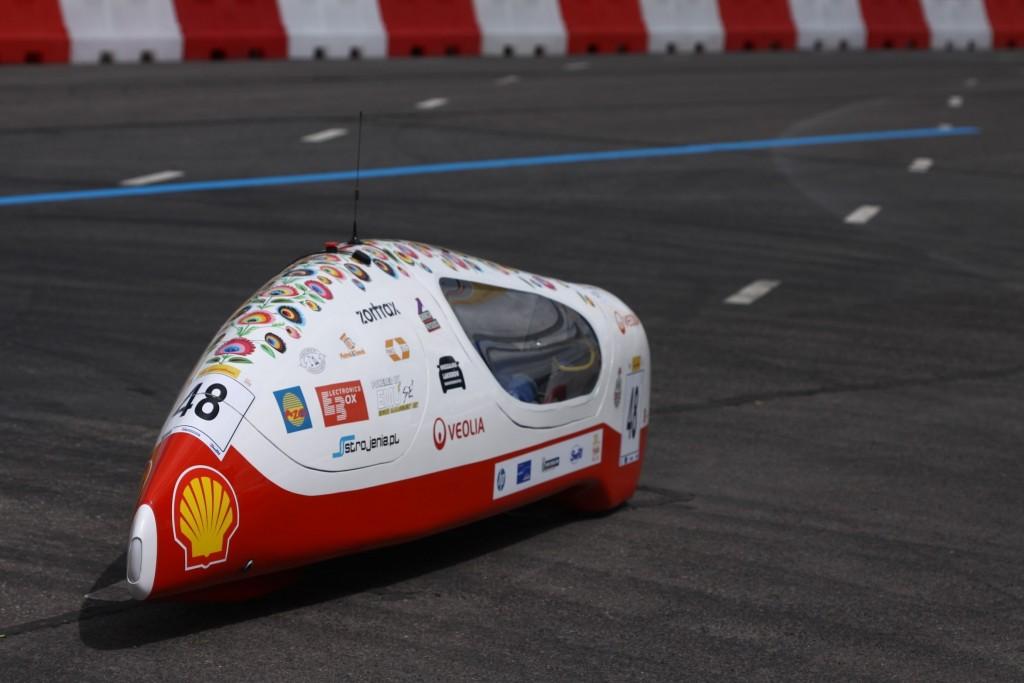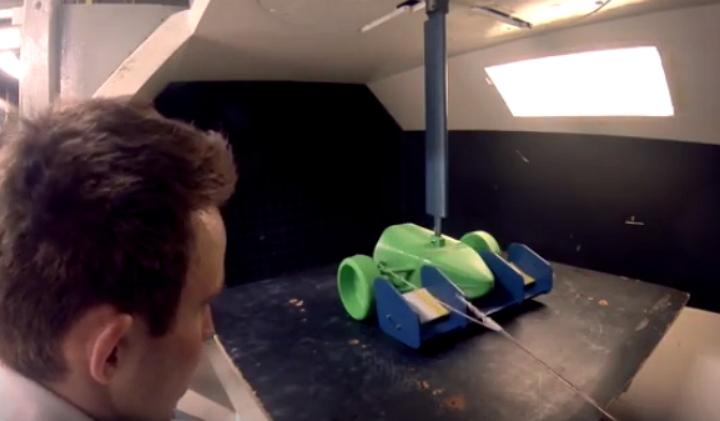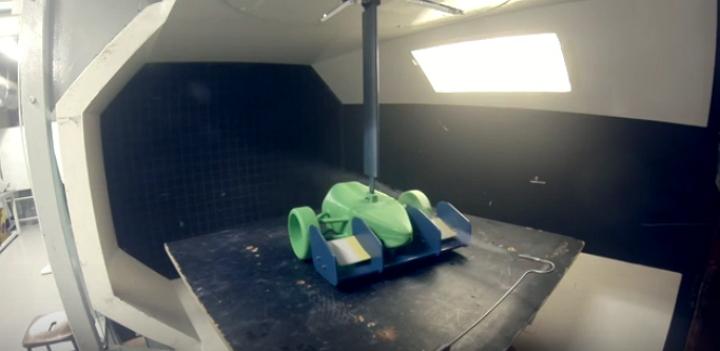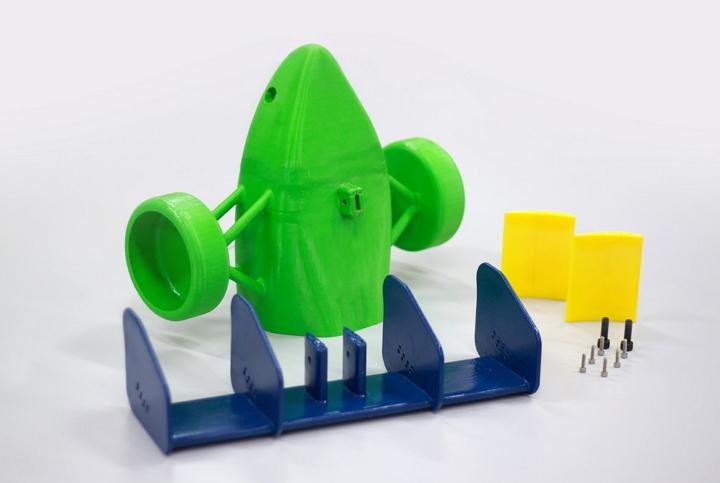 The Shell Eco-marathon challenges students to design, fabricate and then drive the most energy-efficient car they can create. The three annual events – Asia, Americas and Europe – are all about seeing how far student teams can go on the least amount of fuel.
The Shell Eco-marathon challenges students to design, fabricate and then drive the most energy-efficient car they can create. The three annual events – Asia, Americas and Europe – are all about seeing how far student teams can go on the least amount of fuel.
The competition is split into two classes: The Prototype class for maximum efficiency vehicles, and the Urban Concept class which focuses on practical designs. The student cars are also grouped according to the type of energy they require. The Internal combustion engine class uses fuels such as gasoline, diesel and liquids made from natural gas and ethanol. An electric mobility category features vehicles powered by hydrogen fuel cells and lithium-based batteries.
The race was first run in 1939 when a group of Shell Oil Company employees in the US sought bragging rights to see which of them could travel furthest on the same amount of fuel, and since that day, the race has expanded across continents and drives innovation in the future of energy and mobility.
 Now 3D printed materials have been pressed into service as teams went after victory in the Shell Eco-Marathon Europe and Formula Student. The Shell Eco-Marathon Europe, held in July, saw a team called the Iron Warriors use 3D printing technology to prototype and design their vehicle, and that vehicle ended up covering an astonishing 640 km on a single liter of fuel.
Now 3D printed materials have been pressed into service as teams went after victory in the Shell Eco-Marathon Europe and Formula Student. The Shell Eco-Marathon Europe, held in July, saw a team called the Iron Warriors use 3D printing technology to prototype and design their vehicle, and that vehicle ended up covering an astonishing 640 km on a single liter of fuel.
The Iron Warriors led the way among the Polish teams, and their lightweight design featured components 3D printed on a Zortrax M200 printer.
Szymon Madziara of the team says 3D printing and design allowed the team to reduce the mass of the finished vehicle.
“By using 3D printing technology we could reduce the weight of the vehicle and boost the score in Rotterdam,” Madziara said. “A 3D printed gear, which is a part of the propulsion transmission, is both durable – and three times lighter – than if we did it with the aluminum. To reduce the mass, we have 3D printed parts for carrying heavy loads, and then cover them with carbon fiber. The effect was fantastic, so we decided to use this technique for our next vehicle.”
A week after the student vehicles rolled out in the Shell Eco-Marathon, the teams moved on to the world’s largest student motorsport event, the Formula Student. Held in the UK, teams of student engineers were faced with competition with vehicles which took them no more than a year to design and build.
One team, KU e-racing of Kingston University in London, took the number one spot among the electric-powered teams in the Formula Student business event for class 1. That team took advantage of 3D printing as well.
“Recently, we’ve noticed that schools and universities are becoming more and more interested in 3D printing, so we decided to support the young engineers from the Kingston University,” says Karolina Bołądź, the COO of Zortrax.
The KU e-racing team began by building a 3D model of the design to test in a wind tunnel. The KU engineers used their model to test for air resistance and provide design inspiration for their vehicle which would ultimately improve their car’s aerodynamic properties.
Madziara says with the aid of 3D printing, his team hopes to one day build a vehicle capable of traveling 1,000 kilometers on that single liter of fuel.
According to Krzysztof Hockuba, a member of the KU e-Racing team, the team’s entry included pedals, a housing for telemetry devices and cockpit components which were 3D printed as well.


 Have you ever worked on a project which used 3D printing to improve the efficiency or design of a product? Let us know in the Eco-Marathon forum thread on 3DPB.com.
Have you ever worked on a project which used 3D printing to improve the efficiency or design of a product? Let us know in the Eco-Marathon forum thread on 3DPB.com.
Subscribe to Our Email Newsletter
Stay up-to-date on all the latest news from the 3D printing industry and receive information and offers from third party vendors.
You May Also Like
Human Remains Could Be Identified with the Help of Forensic 3D Printing
I’m still in awe at what additive technologies can accomplish, from creating alternative meats, automotive parts, shoe insoles, and surgical models, to giving faces to the lost. That is to...
3D Printing News Briefs, May 17, 2023: Stress-Resistant Alloy, 3D Printed Trophies, & More
In today’s 3D Printing News Briefs, we’re starting off with a little research, as materials scientists developed a 3D printing process that produces an extremely stress-resistant alloy. Moving on to...
On the Ground with COBOD Construction 3D Printing at Ohio State
This winter, The Ohio State University’s Center for Design and Manufacturing Excellence (CDME), which is one of the country’s largest additive research groups, received a COBOD BOD2 3D construction printer...
3D Printing Webinar & Event Roundup: April 2, 2023
You can breathe easy this week, because it will be much less hectic than last week, at least in terms of 3D printing webinars and events to attend! There will...































